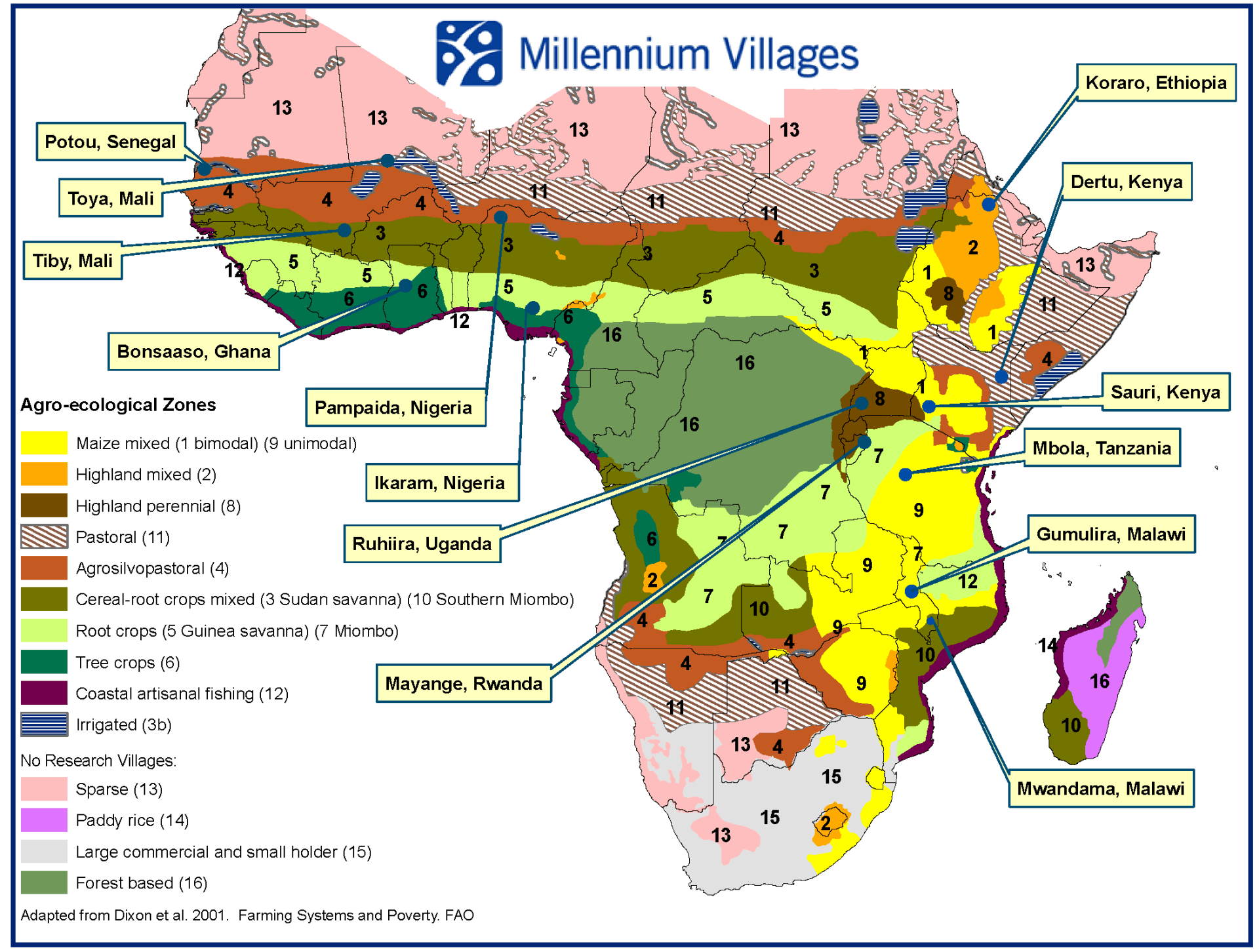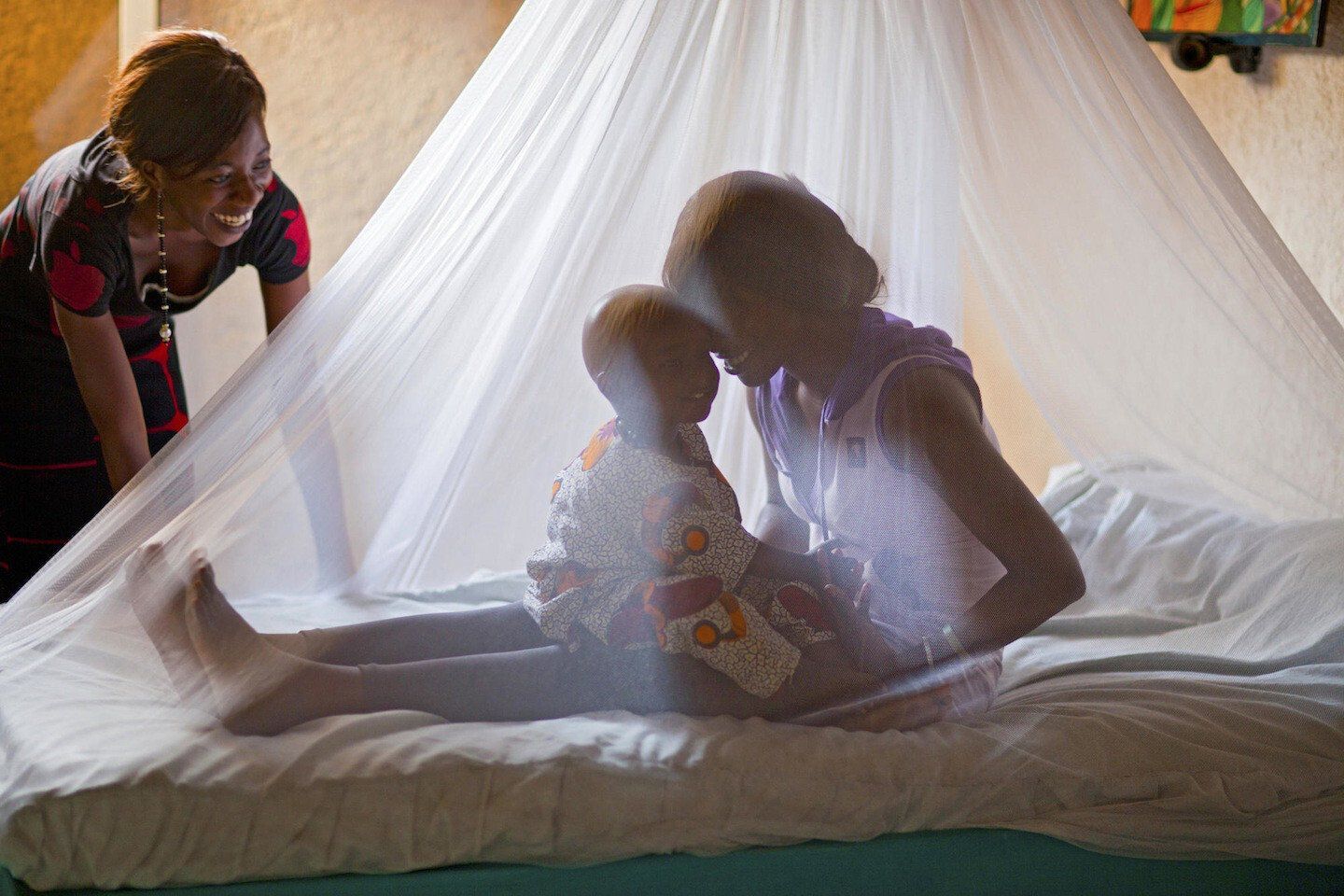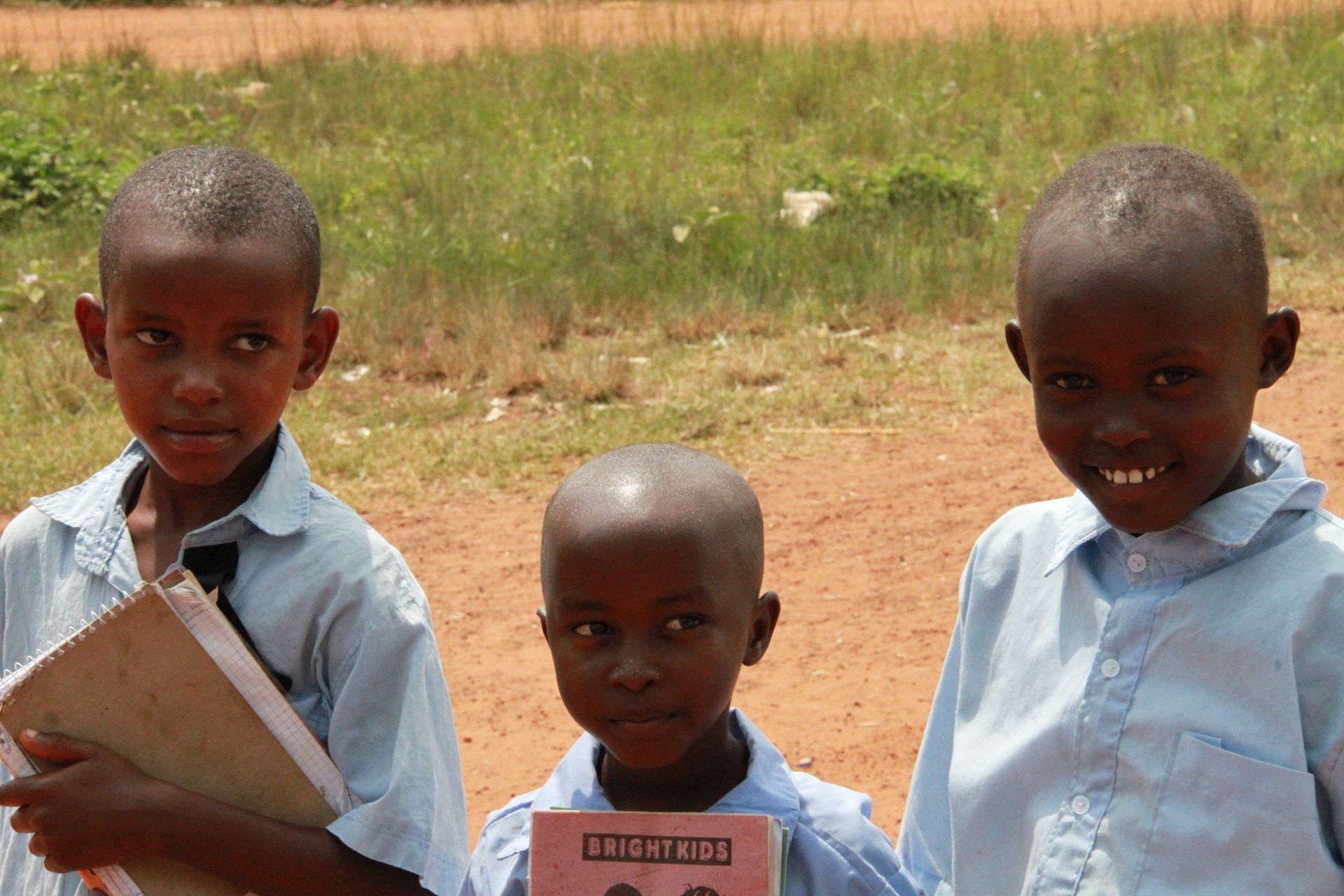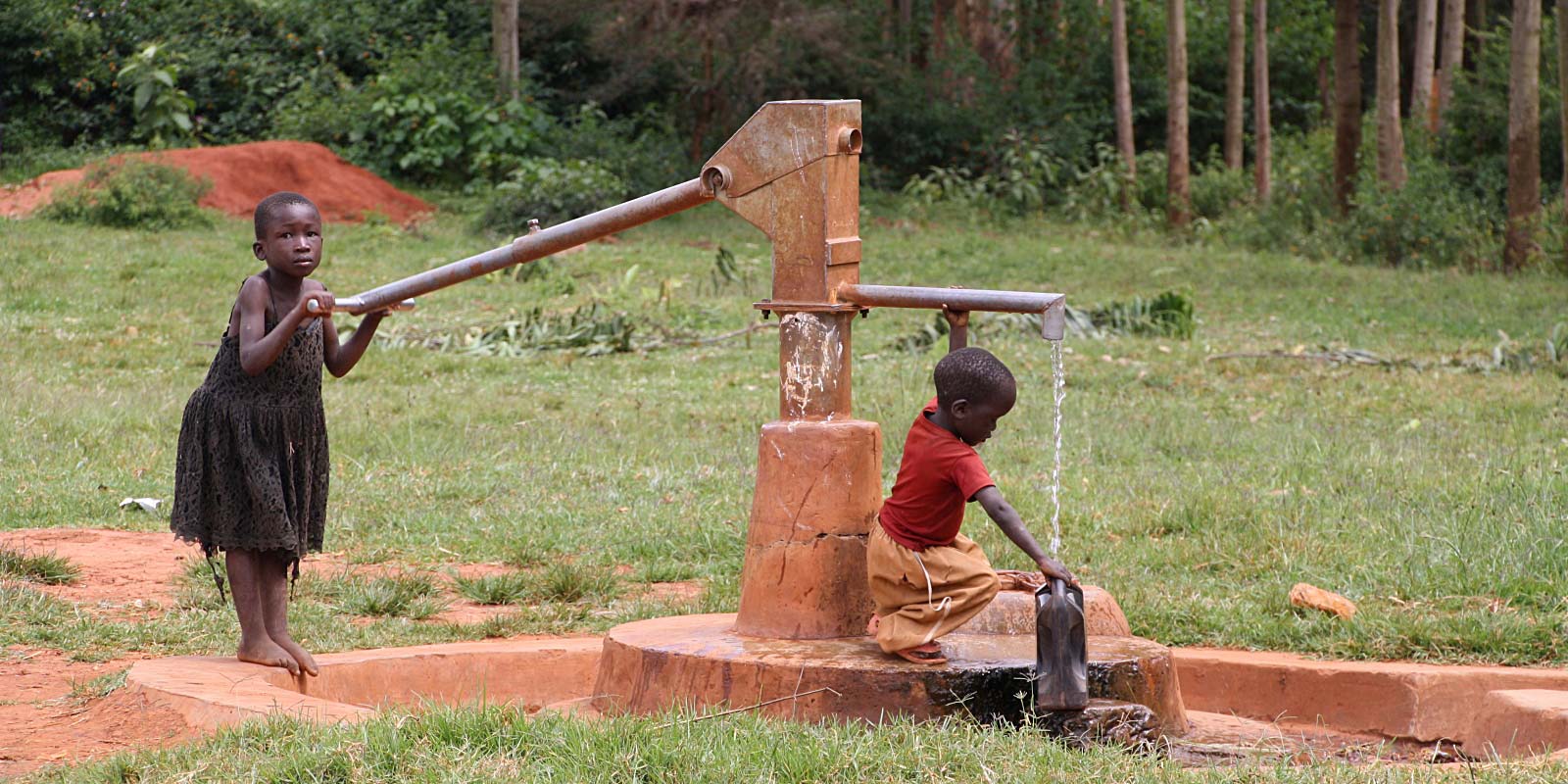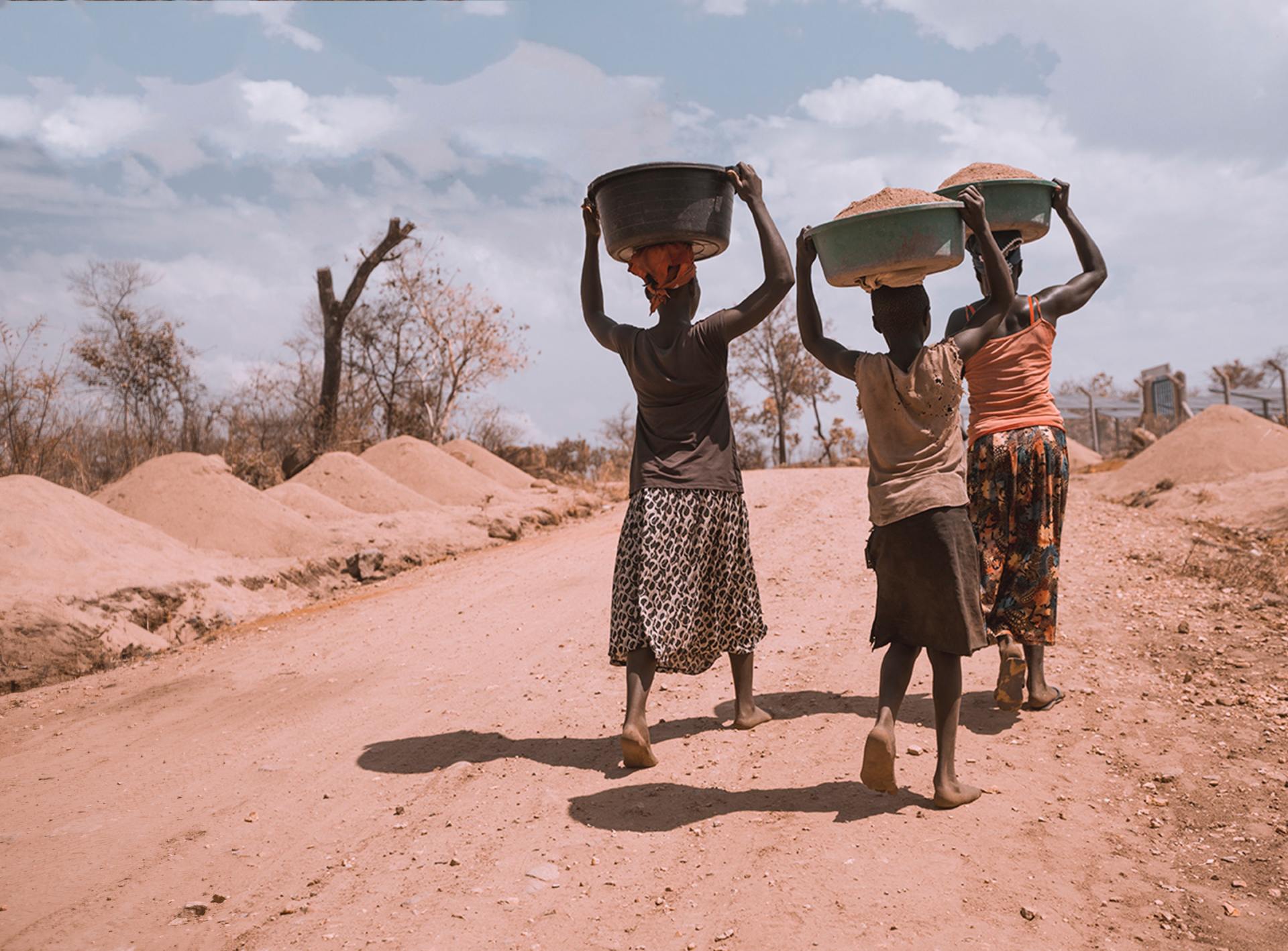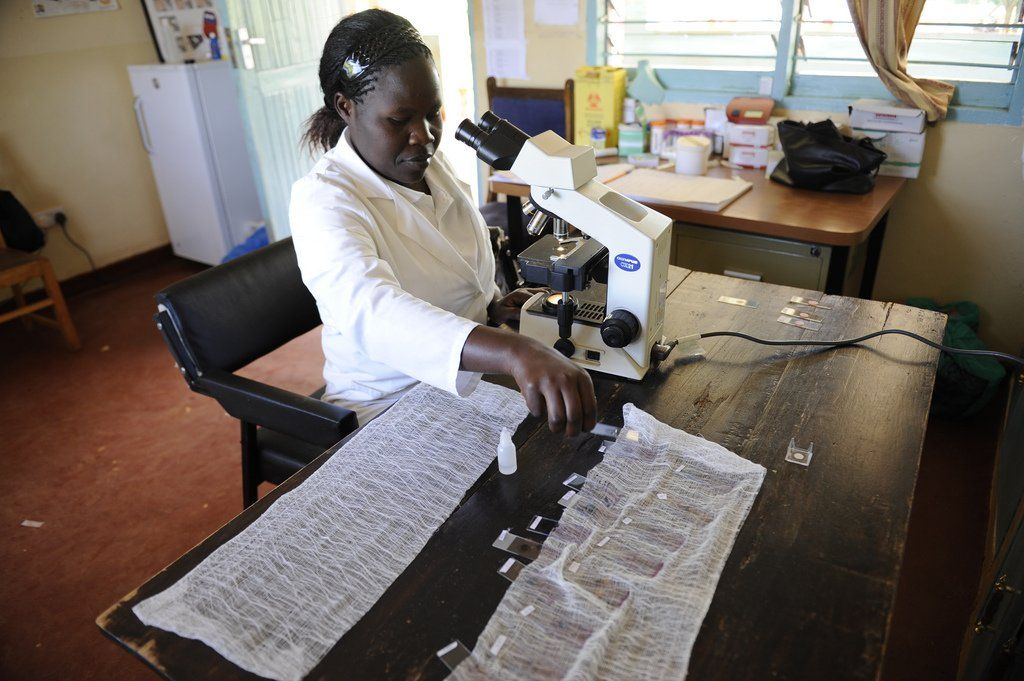A Solution to Address Extreme Poverty:
The Millennium Villages project
From 2005-2015, the Millennium Villages project offered a bold, innovative model for helping rural African communities lift themselves out of extreme poverty. The Millennium Villages model promotes an integrated approach to rural development, using evidence-based technologies and research based strategies in each sector, with sufficient investment over a sufficient period of time. This approach also combines critical cost-sharing, partnerships with local and national governments, and African communities, while focusing on holistic capacity building and focus on community empowerment.
About The Millennium Villages Project
The Millennium Villages Project (MVP) implemented a 10 year, multisector, rural development and research project, initiated in 2005, operating across fifteen different sites in ten sub-Saharan African countries to achieve the Millennium Development Goals (MDGs). MVP was implemented in partnership between the Earth Institute at Columbia University, Millennium Promise, and the United Nations Development Programme (UNDP)—aimed to demonstrate that even the poorest and most remote communities in rural sub-Saharan Africa can implement and manage the range of interventions required to achieve the Millennium Development Goals (MDGs). By demonstrating “what success looks like,” the MVP sought to contribute to global accountability—with requisite urgency—by drawing attention to the feasibility of evidence-based, high-impact, integrated approaches to supporting community-level achievement of the MDGs, and moreover, by mobilizing greater support from diverse stakeholders for targeted investments to address extreme poverty.
The MVP partnered with communities to create and facilitate sustainable, community-led action plans to help achieve the MDGs that were context-specific and tailored to meet communities’ priorities. Simple solutions, such as the use of high-yield seeds, fertilizers, and anti-malarial bed nets, combined with infrastructure improvements of key public facilities, like clinic and schools, and capacity building at the local level were effectively combating extreme poverty and nourishing communities into a new age of health and opportunity. The project also leveraged new advances in science and technology to help empower communities and maximize impact on the ground.
The fifteen locations were: Koraro, Ethiopia; Bonsaaso, Ghana; SADA, Ghana; Dertu, Kenya; Sauri, Kenya;Gumulira, Malawi; Mwandama, Malawi; Tiby, Mali; Toya, Mali; Ikaram, Nigeria; Pampaida, Nigeria; Mayange, Rwanda; Potou, Senegal; Mbola, Tanzania; and, Ruhiira, Uganda.
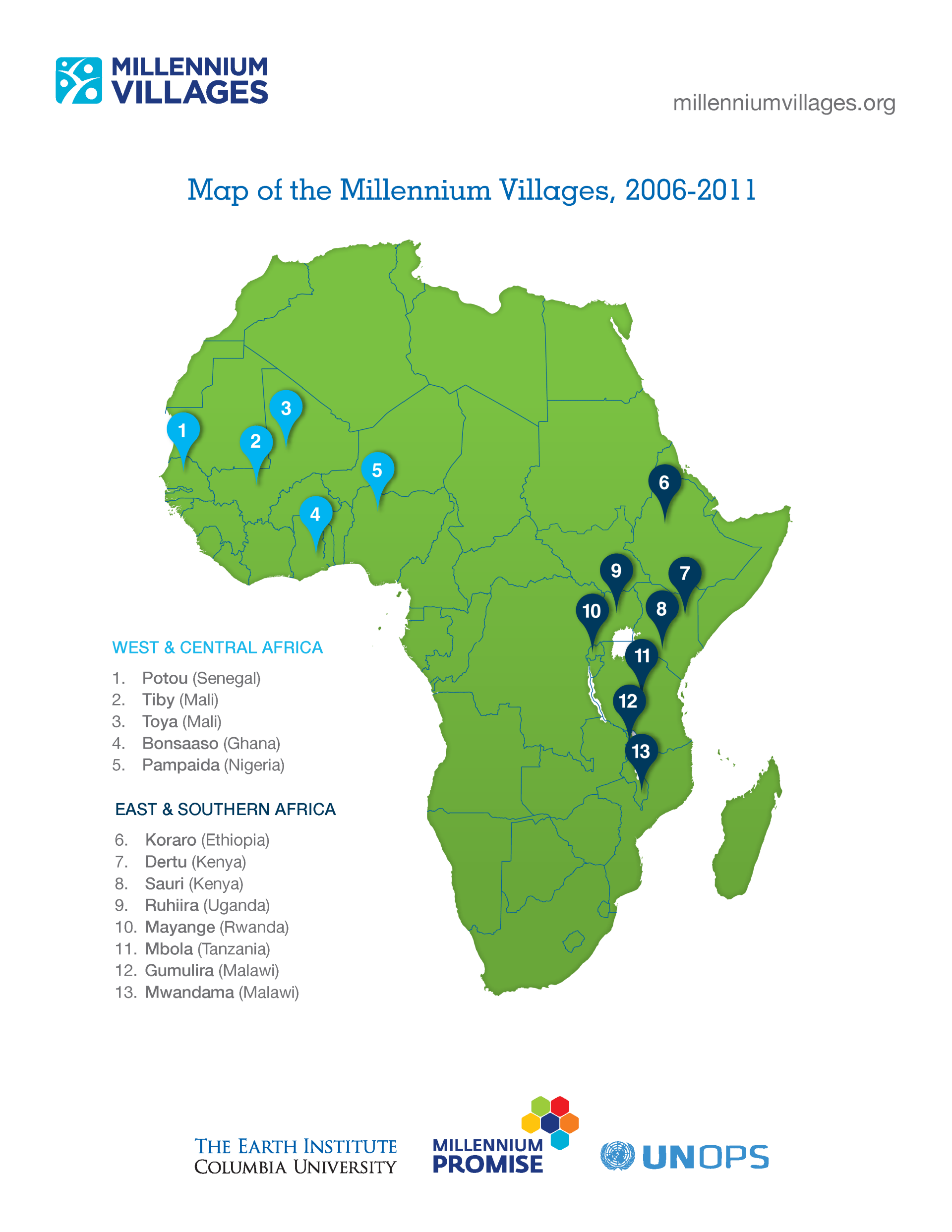
MVP Timeline
- 2000: UN member countries ratify the Millennium Development Goals (MDGs).
- 2004: Eastern/Southern Africa Regional MDG Center was established in Nairobi, Kenya, by the Earth Institute at Columbia University to provide technical support.
- 2005: In partnership with the Earth Institute at Columbia University and the United Nations Development Programme; Millennium Promise Alliance (MPA) launches the Millennium Villages Project to demonstrate that the MDGs could be achieved. Implemented in ten (10) sub-Saharan African countries, the MVP simultaneously addresses the challenges of extreme poverty in many overlapping areas: agriculture, education, health, infrastructure, gender equality, and business development.
- 2006: MPA is at the forefront of policy changes on the fight against malaria. Through the MVP, we demonstrated the efficacy of combining the free mass distribution of bed nets with the mass availability of ACTs. MP was also a founding partner of Malaria No More, an initiative launched at the December 2006 White House Summit on Malaria that seeks to galvanize partnerships and lead a major global advocacy, engagement and implementation campaign for malaria control across Africa.
- 2006: The West and Central Africa Regional MDG Center was established in Bamako, Mali and later transferred in 2012 to Dakar, Senegal.
- 2015: The MVP sites and interventions are transitioned back to their respective governments for management.
- 2016: MPA shifts its focus from the MDGs to their successor, the Sustainable Development Goals (SDGs).
- 2016: The MDG Center’s technical expertise is transitioned to MPA.
- 2016: MPA launches the Sustainable Districts Program (SDP), which builds on the innovations and systems developed by MVP, as well as its lessons, challenges and operating principles (integrated, multi sectoral, and multi scale approach, etc.).





